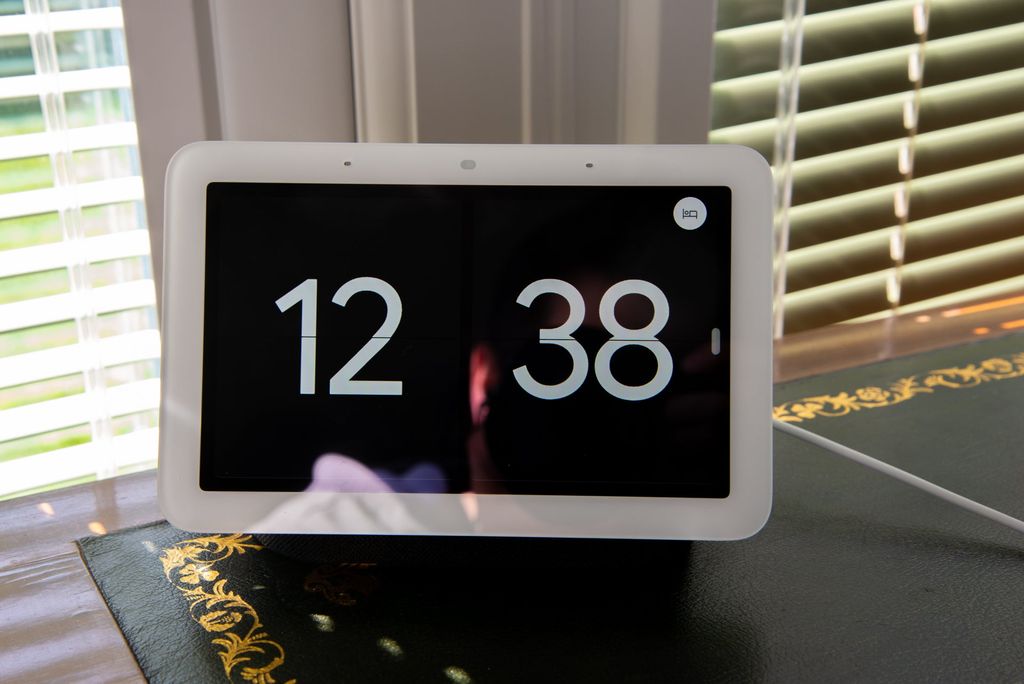Google Home is a smart speaker and voice assistant powered by Google’s artificial intelligence technology. It is designed to provide hands-free control and access to various services and devices in your home. While Google Home offers several benefits such as convenience, smart home integration, and voice recognition, it also has some drawbacks including privacy concerns, limited compatibility, and reliance on internet connection. In comparison to its competitors like Amazon Echo and Apple HomePod, Google Home has its own unique features and limitations. Here are the key takeaways of exploring the pros and cons of Google Home:
Key Takeaways
- Google Home offers convenience and hands-free control, allowing users to access various services and devices with just their voice.
- It seamlessly integrates with smart home devices, enabling users to control and automate their home environment.
- Voice recognition and personalization features make Google Home a personalized assistant that can provide tailored responses and recommendations.
- Privacy concerns arise due to the always-on nature of Google Home, as it listens for voice commands and stores user data.
- Limited compatibility with certain devices and platforms may restrict the functionality of Google Home in some cases.
What is Google Home?

Overview of Google Home
Google Home is a smart speaker and voice assistant that allows users to control various smart devices in their home using voice commands. It is powered by Google Assistant, which is an artificial intelligence-powered virtual assistant developed by Google. With Google Home, users can play music, get answers to questions, set reminders, control smart home devices, and more, all through voice commands. The device is designed to blend seamlessly into any room with its sleek and compact design. Google Home offers a hands-free and convenient way to interact with technology in the home.
Features of Google Home
Google Home offers a range of impressive features that enhance the user experience. One standout feature is its ability to make video calls and access calendars and content on any screen, in any room. With Google Home, you can easily launch scheduled video calls using popular platforms like Microsoft Teams, Google Meet, Zoom, Webex, GoToMeeting, Lifesize, or BlueJeans. Additionally, integration with 365 and Google accounts allows for seamless access to calendars and content. This feature is particularly useful for businesses and individuals who rely on video conferencing for communication and collaboration.
Another notable feature of Google Home is its smart home integration. It can connect and control various smart devices, such as lights, thermostats, and security systems, providing users with convenient hands-free control over their home environment. This integration allows for a seamless and efficient smart home experience.
Voice recognition and personalization are also key features of Google Home. The device can recognize different voices, allowing it to provide personalized responses and tailored experiences for each user. This feature enables Google Home to provide accurate and relevant information, as well as personalized recommendations based on individual preferences.
Overall, the features of Google Home make it a versatile and powerful smart speaker that offers convenience, control, and personalization to users.
How Google Home Works
Google Home works by using voice commands to interact with various smart devices and services. When a user says the wake word, such as ‘Hey Google’ or ‘OK Google’, the device starts listening for a command. The user can then ask Google Home to perform tasks like playing music, setting reminders, answering questions, controlling smart home devices, and more. Google Home uses natural language processing and machine learning algorithms to understand and respond to user commands. It connects to the internet to access information and services, and it can also communicate with other smart devices through Wi-Fi or Bluetooth.
Pros of Google Home

Convenience and Hands-Free Control
One of the key advantages of Google Home is its convenience and hands-free control. With Google Home, you can easily control various smart devices in your home using just your voice. Whether it’s turning on the lights, adjusting the thermostat, or playing your favorite music, Google Home makes it effortless to manage your smart home ecosystem. This hands-free control not only saves you time and effort but also enhances the overall convenience of your daily life.
Smart Home Integration
Smart home integration is one of the key features of Google Home. With its compatibility with various smart home devices, Google Home allows users to control their connected devices using voice commands. Whether it’s adjusting the thermostat, turning on the lights, or locking the doors, Google Home provides a convenient and hands-free way to manage your smart home. By integrating with popular smart home platforms like Nest, Philips Hue, and Samsung SmartThings, Google Home offers a seamless and integrated smart home experience.
Voice Recognition and Personalization
Voice recognition and personalization are key features of Google Home that enhance the user experience. With advanced voice recognition technology, Google Home can accurately identify and respond to individual voices, allowing for personalized responses and tailored content. This means that each member of the household can have their own personalized experience with Google Home, from accessing their own calendars and playlists to receiving personalized recommendations. Additionally, Google Home’s voice recognition capabilities enable hands-free control, making it convenient for users to interact with the device without the need for physical input.
Cons of Google Home

Privacy Concerns
One of the main concerns with Google Home is privacy. Since Google Home is always listening for the wake word, there is a potential risk of unintentionally recording private conversations. While Google has implemented measures to protect user privacy, such as allowing users to delete their voice recordings, some users may still feel uneasy about having a device constantly listening in their homes. It is important for users to be aware of the privacy implications and make an informed decision before using Google Home.
Limited Compatibility
While Google Home offers a wide range of features and integrations, one potential drawback is its limited compatibility with certain devices and platforms. Although Google Home works seamlessly with popular smart home devices like Philips Hue lights and Nest thermostats, it may not be compatible with all smart devices on the market. This means that if you have specific smart devices that are not compatible with Google Home, you may not be able to control them using voice commands or through the Google Home app. It’s important to check the compatibility of your existing smart devices before investing in Google Home.
Reliance on Internet Connection
One of the key considerations when using Google Home is its reliance on an internet connection. Google Home requires a stable and reliable internet connection to function properly. Without an internet connection, many of its features and capabilities may be limited or unavailable.
Table 1: Comparison of Google Home’s Internet Requirements
| Feature | Internet Requirement |
|---|---|
| Voice commands | Requires internet connection |
| Music streaming | Requires internet connection |
| Smart home control | Requires internet connection |
It’s important to note that while Google Home can still perform some basic functions, such as setting alarms or timers, without an internet connection, its full potential is unlocked when connected to the internet.
Tip: Ensure that you have a stable and fast internet connection to fully enjoy the benefits of Google Home.
Google Home vs. Competitors

Comparison with Amazon Echo
When comparing Google Home with Amazon Echo, there are a few key differences to consider. Firstly, Google Home offers a more seamless integration with other Google services, such as Google Calendar and Google Photos. This means that users can easily access their calendar events and view their photos on any screen connected to Google Home. On the other hand, Amazon Echo has a wider range of compatible smart home devices, allowing users to control more aspects of their home with voice commands. Additionally, Google Home has a more advanced voice recognition system, which allows it to better understand and respond to individual users. This personalized experience can be particularly useful in households with multiple users. Overall, both Google Home and Amazon Echo have their own strengths and weaknesses, and the choice between them ultimately depends on the specific needs and preferences of the user.
Comparison with Apple HomePod
When comparing Google Home with Apple HomePod, there are a few key differences to consider. One major difference is the smart home integration. While Google Home works seamlessly with a wide range of smart home devices, Apple HomePod is more limited in its compatibility. Another difference is the voice recognition and personalization. Google Home has advanced voice recognition technology that can distinguish between different users and provide personalized responses, while Apple HomePod does not offer the same level of personalization. Lastly, a notable difference is the reliance on internet connection. Google Home relies heavily on an internet connection for most of its features, whereas Apple HomePod can still perform basic tasks even without an internet connection.
Conclusion
In conclusion, virtual meetings have become an essential tool for businesses in the wake of the COVID-19 pandemic. They offer numerous advantages, including cost savings, increased accessibility, and environmental sustainability. However, they also come with drawbacks such as reduced face-to-face contact and technical challenges. Overall, virtual meetings provide a convenient and efficient way to connect with clients and colleagues, but it’s important to find a balance between virtual and in-person interactions for optimal collaboration.
Frequently Asked Questions
What is Google Home?
Google Home is a smart speaker and voice assistant powered by Google Assistant. It allows users to interact with their devices using voice commands and perform various tasks such as playing music, controlling smart home devices, and getting information.
How does Google Home work?
Google Home works by listening for a wake word, usually ‘Hey Google’ or ‘Ok Google’, and then processing voice commands. It uses natural language processing and machine learning algorithms to understand and respond to user queries and commands.
What are the features of Google Home?
Some of the features of Google Home include playing music from various streaming services, setting reminders and alarms, controlling smart home devices, answering questions, providing weather and news updates, and making hands-free calls.
What are the pros of Google Home?
Some of the pros of Google Home include convenience and hands-free control, smart home integration, and voice recognition and personalization.
What are the cons of Google Home?
Some of the cons of Google Home include privacy concerns, limited compatibility with certain devices and platforms, and reliance on an internet connection.
How does Google Home compare to Amazon Echo?
Google Home and Amazon Echo are both smart speakers with voice assistants, but they have some differences in terms of features, compatibility, and ecosystem. Google Home is powered by Google Assistant, while Amazon Echo is powered by Alexa.




